Kid’s woodworking projects offer a fantastic way to ignite a passion for creativity and craftsmanship in young minds. Imagine the joy of building a birdhouse, a toy car, or even a simple bookshelf – the possibilities are endless! Woodworking encourages problem-solving, hand-eye coordination, and a sense of accomplishment, all while fostering a connection with nature and the satisfaction of creating something with your own hands.
This guide will take you through the basics of kid’s woodworking, from choosing the right wood and tools to tackling both simple and more advanced projects. We’ll also cover important safety considerations and provide resources to help you get started. Whether you’re a seasoned woodworker looking to share your passion with your children or a complete beginner eager to learn, this guide has something for everyone.
Introduction to Kids’ Woodworking: Kid’s Woodworking Projects
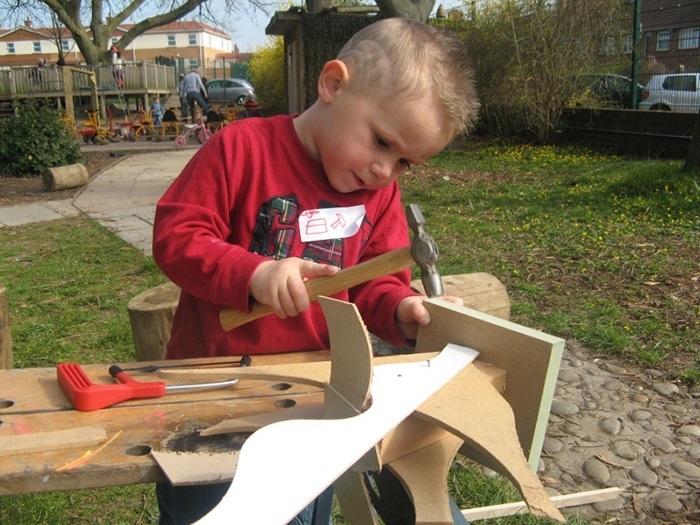
Woodworking is a fantastic activity for kids of all ages. It allows them to unleash their creativity, learn problem-solving skills, and develop hand-eye coordination. Plus, it’s a great way to spend quality time together as a family.
However, it’s crucial to prioritize safety when working with wood and tools. Before embarking on any project, it’s essential to teach children the proper handling of tools and equipment, emphasizing the importance of wearing safety goggles and appropriate clothing.
Types of Wood for Kids’ Projects
Wood selection is vital for kids’ woodworking projects. Different types of wood offer unique characteristics, making some better suited for specific projects than others.
Here are some common wood types suitable for kids’ woodworking projects:
- Pine: Pine is a softwood, making it easy to work with and less likely to cause splinters. Its affordability and availability make it a popular choice for beginners.
- Basswood: This softwood is known for its smooth grain and ease of carving. It’s ideal for detailed projects like ornaments or small sculptures.
- Birch: This hardwood is known for its strength and durability. It’s a good choice for projects that require a more robust material, such as toy trucks or sturdy boxes.
- Maple: Maple is a beautiful hardwood with a tight grain and a warm color. It’s perfect for projects where aesthetics are important, such as picture frames or cutting boards.
Simple and Easy Kids’ Woodworking Projects
Woodworking is a fantastic hobby for kids of all ages. It teaches valuable skills like problem-solving, creativity, and hand-eye coordination. Plus, it’s a fun and rewarding way to create something unique and beautiful.
Projects for Different Age Groups
These projects are categorized by age groups to ensure they are appropriate and challenging enough for kids of different skill levels.
3-5 Years
- Wooden Animal Puzzles: Cut simple shapes like circles, squares, and triangles from wood and paint them with bright colors. These pieces can be used to create animal shapes, and kids can practice their fine motor skills by assembling the puzzle.
- Wooden Bead Garland: Drill holes into wooden beads and string them together with yarn or string. This project helps kids develop their hand-eye coordination and creativity as they choose colors and patterns for their garland.
- Wooden Picture Frame: Glue together four pieces of wood to create a simple frame. Kids can decorate it with paint, markers, or stickers and display their artwork inside.
6-8 Years
- Wooden Toy Car: Using simple woodworking techniques, kids can create a toy car from scrap wood. This project involves cutting, sanding, and gluing, and it teaches basic construction skills.
- Wooden Birdhouse: Kids can build a birdhouse using pre-cut pieces of wood. This project teaches them about measurements, assembly, and the importance of creating a safe and comfortable home for birds.
- Wooden Coaster: Cut a square or round piece of wood and sand it smooth. Kids can personalize their coaster by painting, staining, or adding decorative elements.
9-12 Years
- Wooden Storage Box: This project involves cutting, sanding, and assembling pieces of wood to create a box with a lid. Kids can learn about different joinery techniques and design their own unique storage solution.
- Wooden Wall Shelf: Using simple woodworking techniques, kids can create a wall shelf to display books, toys, or other items. This project teaches them about measurements, angles, and the importance of creating a stable and functional shelf.
- Wooden Sign: Kids can create a personalized sign using a piece of wood and a woodburning tool. This project allows them to express their creativity and create a unique decorative piece for their room or home.
Advanced Woodworking Projects for Kids
As kids gain more experience and confidence, they can move on to more challenging woodworking projects. These projects often involve more complex techniques, like joinery, carving, and finishing, and require a higher level of precision and attention to detail. However, with proper supervision and guidance, kids can learn these skills and create truly impressive pieces.
Projects Involving Joinery
Joinery refers to the techniques used to connect different pieces of wood together. These techniques can range from simple butt joints to more complex dovetail joints.
- Simple Picture Frame: This project introduces kids to basic joinery techniques like butt joints and miter cuts. They can use simple tools like a saw, ruler, and glue to create a frame to display their artwork or favorite photos.
- Small Wooden Box: A small wooden box is a great way for kids to practice rabbet joints and learn about box construction. They can use a router or chisel to create the rabbet joints and then assemble the box using glue and screws.
- Wooden Shelf: Building a simple shelf involves using dado joints to create a sturdy and stable shelf. Kids can learn how to use a dado blade on a table saw or a chisel to create the dado joints and then assemble the shelf.
Projects Involving Carving
Wood carving is a rewarding skill that allows kids to create unique and personalized pieces. It requires patience and practice but can be a fun and creative outlet.
- Wooden Spoon: Carving a wooden spoon is a classic beginner project that teaches kids basic carving techniques and how to shape wood. They can use a carving knife or a gouge to create the spoon’s shape and then sand and finish it.
- Animal Figurines: Kids can use their imaginations and carving skills to create animal figurines. They can choose a simple animal design and use a carving knife or gouge to shape the wood into the desired form.
- Decorative Wooden Plaque: A wooden plaque can be carved with a simple design or a personalized message. Kids can use carving tools to create a unique and decorative piece that can be used as a wall hanging or a gift.
Projects Involving Finishing
Finishing a woodworking project involves applying a protective coating that enhances the wood’s appearance and durability.
- Simple Wood Stain: Staining a piece of wood can bring out its natural grain and color. Kids can learn about different types of wood stains and how to apply them evenly. They can also experiment with different finishes like polyurethane or varnish.
- Painting a Wooden Toy: Painting a wooden toy can be a fun and creative way to add color and personality to a project. Kids can learn about different types of paint and how to apply them smoothly. They can also use stencils or brushes to create interesting patterns.
- Applying a Wax Finish: A wax finish is a natural and easy way to protect and enhance the look of wood. Kids can learn how to apply wax evenly and buff it to a smooth finish.
Tools and Equipment for Kids’ Woodworking
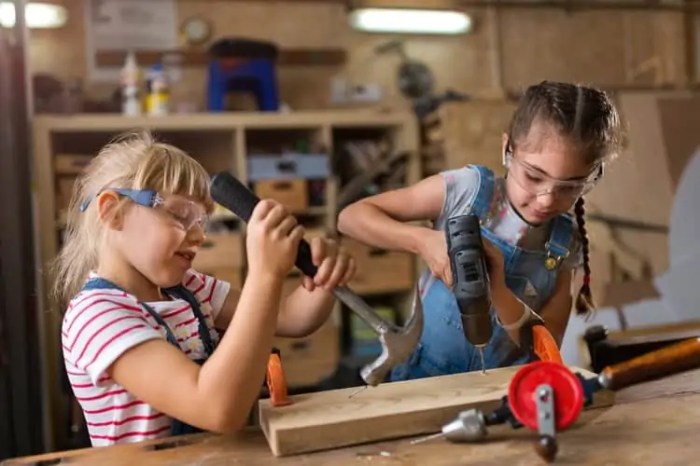
Woodworking is a fun and rewarding hobby for kids of all ages. It allows them to create unique projects while learning valuable skills. But before they can start building, they need the right tools and equipment. This section will explore the essential tools for kids’ woodworking, focusing on safety and age-appropriateness.
Measuring Tools
Measuring tools are essential for accuracy in woodworking. They help ensure that pieces are cut to the correct size and that the project comes together as planned.
- Measuring Tape: A measuring tape is used to measure the length and width of materials. It’s important to choose a tape measure with clear markings and a sturdy case.
- Ruler: A ruler is useful for measuring shorter distances and drawing straight lines. Choose a ruler with clear markings and a sturdy edge.
- T-Square: A T-square is used to draw perpendicular lines and check for square corners. It’s a helpful tool for ensuring accuracy in woodworking projects.
Cutting Tools
Cutting tools are used to shape and size wood. They are essential for creating the basic forms for any woodworking project.
- Hand Saw: A hand saw is used for cutting wood into smaller pieces. Choose a saw with a comfortable grip and sharp teeth. Always use a sawhorse or work table for support and to ensure stability while cutting.
- Coping Saw: A coping saw is used for making intricate cuts, such as curves and shapes. It has a thin blade that can be easily maneuvered.
- Utility Knife: A utility knife is a versatile tool that can be used for cutting paper, cardboard, and thin pieces of wood. It has a retractable blade that can be adjusted for different cutting depths. Always use a utility knife with a sharp blade and be careful to keep fingers away from the blade.
Sanding Tools
Sanding tools are used to smooth and refine the surface of wood. They help create a smooth and polished finish.
- Sandpaper: Sandpaper comes in different grits, with higher grits indicating a finer finish. Start with a coarser grit to remove rough edges and then work your way up to finer grits for a smoother finish.
- Sanding Block: A sanding block is used to hold sandpaper and provides a more stable and even sanding surface. It’s especially helpful for sanding flat surfaces.
- Random Orbit Sander: A random orbit sander is a power tool that provides a faster and more efficient way to sand wood. It uses a rotating sanding pad to remove material and create a smooth finish. Always use a random orbit sander with proper safety precautions, including eye protection and a dust mask.
Finishing Tools
Finishing tools are used to protect and enhance the appearance of wood. They can add color, shine, and durability to a project.
- Paintbrush: A paintbrush is used to apply paint, stain, or varnish to wood. Choose a brush with soft bristles and a size appropriate for the project. When using paint, use a paint thinner or mineral spirits to clean the brush after use.
- Roller: A roller is a more efficient way to apply paint or stain to large surfaces. Choose a roller with a nap length appropriate for the type of paint or stain being used.
- Finishing Cloth: A finishing cloth is used to apply wax, polish, or sealant to wood. Choose a soft and lint-free cloth for the best results.
Other Essential Equipment
In addition to the tools listed above, there are other essential pieces of equipment for kids’ woodworking.
- Work Table: A work table provides a stable and level surface for working on projects. It should be sturdy enough to support the weight of tools and materials.
- Work Gloves: Work gloves protect hands from splinters, sharp edges, and other hazards. Choose gloves that are comfortable and provide a good grip.
- Safety Glasses: Safety glasses protect eyes from flying debris and sawdust. Always wear safety glasses when working with power tools or hand tools that can create projectiles.
- Dust Mask: A dust mask protects the respiratory system from inhaling sawdust and other wood particles. Always wear a dust mask when sanding or working with power tools that create dust.
Age-Appropriate Tools and Supervision, Kid’s woodworking projects
It’s crucial to use age-appropriate tools and provide adequate supervision when children are working with wood. Younger children should start with simple projects using hand tools like a hammer, screwdriver, and saw. As they grow older and develop their skills, they can gradually move on to more complex projects using power tools.
Always supervise children when they are working with tools and ensure they understand basic safety precautions.
Woodworking Resources for Kids and Parents
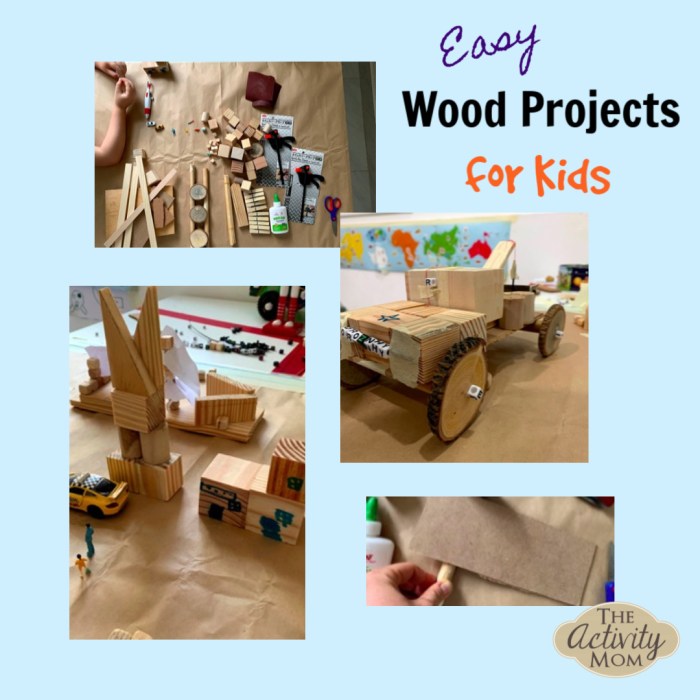
Finding the right resources can make woodworking a fun and educational experience for kids. There are plenty of options available to help both kids and parents learn the basics of woodworking, explore new projects, and stay safe while working with tools.
Online Resources
The internet is a treasure trove of woodworking information for kids and parents. Numerous websites and blogs are dedicated to woodworking projects specifically designed for children. These resources offer step-by-step instructions, detailed diagrams, and helpful tips for successful woodworking endeavors.
- Woodworking for Kids: This website provides a wide range of woodworking projects for kids of all ages and skill levels. It features clear instructions, detailed photos, and safety tips. The site also offers a variety of resources for parents, including a section on choosing the right tools for kids.
- The Woodworking Shop: This blog is run by a father and daughter duo who share their love of woodworking with the world. They offer a variety of woodworking projects for kids, as well as tips and advice on how to get started in woodworking.
- Ana White: While not exclusively for kids, Ana White’s website offers a vast collection of free woodworking plans, including many that are suitable for children. Her detailed instructions and clear diagrams make her plans easy to follow, even for beginners.
Books
Books offer a more comprehensive and in-depth approach to woodworking, providing detailed explanations, illustrations, and safety guidelines. Many books are specifically designed for children, making the learning process engaging and enjoyable.
- “The Complete Idiot’s Guide to Woodworking” by Steve Johnson: This book covers the basics of woodworking, including tool safety, wood selection, and project planning. It also features a variety of projects suitable for beginners.
- “Woodworking for Kids: Simple Projects for Young Makers” by Kate Colleran: This book offers a collection of fun and easy woodworking projects that kids can complete with minimal supervision. It includes clear instructions, colorful illustrations, and tips for success.
- “The Woodworking Handbook for Kids” by Mike Sievers: This book provides a comprehensive introduction to woodworking, covering everything from choosing the right tools to finishing techniques. It also features a variety of projects suitable for different skill levels.
Workshops
Woodworking workshops offer hands-on learning experiences that allow kids to develop their skills under the guidance of experienced instructors. These workshops provide a safe and controlled environment for kids to explore woodworking and learn important safety practices.
- Local Community Centers: Many community centers offer woodworking classes for kids. These classes typically cover the basics of woodworking, tool safety, and project construction. They are a great way for kids to learn new skills and meet other kids who share their interests.
- Home Depot Workshops: Home Depot offers free workshops for kids on a variety of topics, including woodworking. These workshops are a fun and interactive way for kids to learn about woodworking and explore their creativity.
- Private Woodworking Schools: Some private woodworking schools offer classes specifically designed for kids. These classes provide a more in-depth and personalized learning experience, with experienced instructors who can guide kids through more complex projects.
Educational Resources
Several educational resources provide valuable information on woodworking basics and safety. These resources can help kids and parents understand the fundamentals of woodworking and ensure safe practices in the workshop.
- Woodworking Safety for Kids: This website provides comprehensive information on woodworking safety, covering topics such as tool safety, workshop organization, and personal protective equipment. It offers tips and guidelines to help kids and parents create a safe and enjoyable woodworking environment.
- The Woodworking Safety Institute: This organization provides a variety of resources on woodworking safety, including publications, videos, and online courses. Their website offers valuable information for both beginners and experienced woodworkers.
- YouTube Channels: Several YouTube channels offer educational videos on woodworking basics and safety. These videos can provide visual demonstrations of woodworking techniques and safety practices, making it easier for kids to understand and learn.
Creative Ideas for Kids’ Woodworking Projects
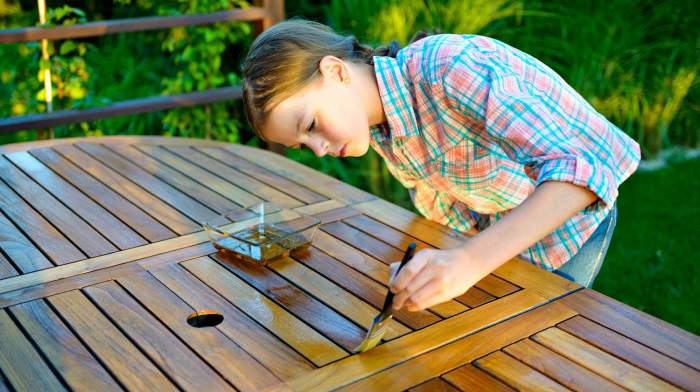
Encouraging children’s creativity in woodworking projects is crucial for fostering their imagination, problem-solving skills, and appreciation for craftsmanship. By providing them with opportunities to personalize their projects, we empower them to express themselves and develop a sense of ownership over their creations.
Woodworking projects can be a fantastic way for kids to express themselves creatively. It’s not just about following instructions; it’s about letting their imaginations run wild and turning their ideas into tangible objects.
Personalized Toys and Decorations
Creating custom toys and decorations allows children to express their unique preferences and design aesthetic. They can choose the shapes, colors, and embellishments that best reflect their personality and interests. For example, a child who loves animals might create a wooden toy giraffe with intricate details, while another might prefer a colorful birdhouse with a whimsical design.
- Wooden Toy Animals: Children can create their own unique animal figures by carving, sanding, and painting wood. They can choose their favorite animal and add personalized details like spots, stripes, or even a name.
- Custom Playhouses: Encourage children to design their own miniature playhouses or dollhouses, complete with doors, windows, and furniture. They can choose the style, size, and colors that best suit their imagination.
- Personalized Ornaments: Children can create unique ornaments for their Christmas tree or for other special occasions. They can carve, paint, or decorate wooden shapes to reflect their favorite themes or characters.
Upcycling and Sustainable Projects
Upcycling techniques encourage children to think creatively about reusing and repurposing materials. This promotes sustainability by reducing waste and giving new life to discarded items. For example, children can transform old wooden crates into storage boxes, create whimsical animal figures from scrap wood, or use recycled materials to build unique structures.
- Upcycled Storage Boxes: Encourage children to find old wooden crates, boxes, or other containers and transform them into functional storage solutions. They can paint, decorate, or add handles to personalize their creations.
- Creative Animal Sculptures: Children can use scrap wood, branches, or other natural materials to create whimsical animal sculptures. They can carve, paint, or assemble the pieces to bring their creations to life.
- Upcycled Birdhouses: Children can create unique birdhouses using recycled materials like old cans, wooden pallets, or even plastic bottles. They can add decorative elements and paint them to attract birds to their backyard.
Safety Considerations for Kids’ Woodworking
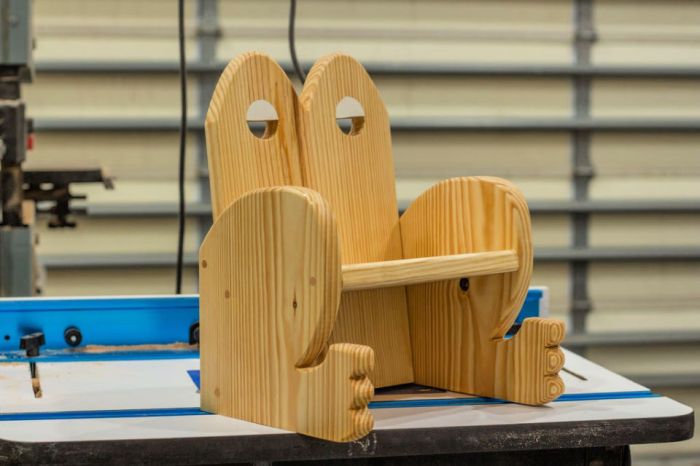
Woodworking is a fun and rewarding hobby, but it’s important to remember that safety should always come first, especially when kids are involved. Woodworking tools and machinery can be dangerous if not used properly, so it’s essential to have a clear understanding of safety precautions and to follow them diligently.
Adult Supervision
Adult supervision is crucial during all woodworking activities involving children. A responsible adult should be present to guide and monitor the child’s actions, ensuring they use tools and machinery safely and follow established safety procedures.
Safety Checklist for Kids’ Woodworking
A comprehensive safety checklist can help minimize risks and ensure a safe woodworking experience for children. Here’s a list of important safety precautions:
- Wear appropriate clothing: Long pants, closed-toe shoes, and a short-sleeved shirt are recommended to protect against accidental cuts, scrapes, and flying debris.
- Use safety glasses: Safety glasses should always be worn to protect the eyes from wood chips, sawdust, and other projectiles.
- Keep work areas clean: A clean and organized workspace reduces the risk of accidents and makes it easier to see and avoid potential hazards.
- Use tools and machinery safely: Always follow the manufacturer’s instructions for using tools and machinery. Never operate equipment without proper training and supervision.
- Keep fingers and hands away from blades: Always keep fingers and hands away from moving blades, especially when using saws, planers, or jointers.
- Use push sticks and feather boards: Push sticks and feather boards are essential safety tools for guiding wood through saws and planers, keeping fingers away from blades.
- Disconnect power tools before adjusting or cleaning: Always disconnect power tools from the power source before making adjustments, cleaning, or replacing blades.
- Use proper lifting techniques: When lifting heavy objects, bend your knees and use your leg muscles, not your back, to avoid strain and injury.
- Store tools and materials properly: Store tools and materials in a safe and organized manner, away from children’s reach, to prevent accidental injuries.
Safe Handling of Tools and Machinery
Proper handling of tools and machinery is essential for safe woodworking. Here are some guidelines:
- Read and understand the instructions: Before using any tool or machine, carefully read and understand the manufacturer’s instructions and safety warnings.
- Use tools for their intended purpose: Never use a tool for a purpose other than its intended design. Using tools improperly can lead to accidents and injuries.
- Keep tools sharp and in good working order: Dull tools require more force to use, increasing the risk of slips and accidents. Regularly inspect and maintain tools to ensure they are sharp and in good working condition.
- Use the right tool for the job: Choose the appropriate tool for the task at hand. Using the wrong tool can be dangerous and inefficient.
- Avoid distractions: When using tools or machinery, avoid distractions and focus on the task at hand. Distractions can lead to accidents and injuries.
- Wear appropriate personal protective equipment: Always wear appropriate personal protective equipment, such as safety glasses, gloves, and hearing protection, when using tools and machinery.
Last Recap
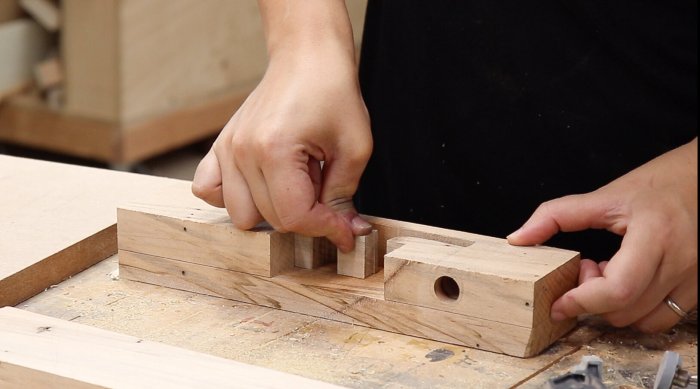
Woodworking is a journey of discovery, where every project offers new challenges and rewards. With a little guidance, patience, and a healthy dose of enthusiasm, you and your child can embark on an exciting adventure filled with creativity, learning, and lasting memories. So grab your tools, gather your materials, and let the fun begin! Who knows, you might just spark a lifelong love of woodworking in your child.
Key Questions Answered
What kind of wood is best for kids’ woodworking projects?
Softwoods like pine and cedar are generally easier to work with for beginners. They’re less prone to splintering and are more forgiving for mistakes.
What are some essential tools for kids’ woodworking?
Start with basic tools like a saw, hammer, screwdriver, measuring tape, and sandpaper. As your child progresses, you can introduce more specialized tools.
How can I ensure safety while my child is woodworking?
Always supervise your child closely, especially when using power tools. Make sure they wear safety glasses and appropriate clothing. Keep work areas clean and free of clutter.
What are some good resources for finding kid’s woodworking projects?
There are many online resources, books, and workshops dedicated to kid’s woodworking. Look for resources that provide clear instructions, safety tips, and age-appropriate projects.
Getting kids into woodworking can be a fun and rewarding experience. You can find tons of inspiration for kid-friendly projects in woodworking magazines , which often feature beginner-friendly plans and techniques. From simple birdhouses to intricate toy cars, there’s a project for every skill level, making woodworking a great way to spark creativity and teach valuable life skills.
